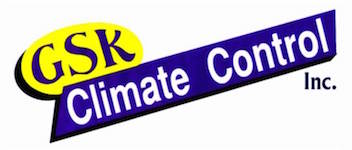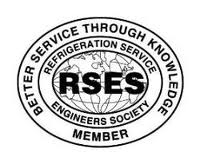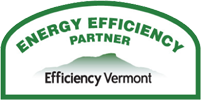Can you imagine putting a 100,000 miles on your car before it’s next oil change? It’s pretty obvious to most that the car, having run that long without proper maintenance would not be running in top condition. If the car’s motor didn’t already blow up, it’s on the brink – which would prove a very costly fix. And to think it all could’ve been avoided with a regularly-scheduled, inexpensive oil change! Well, your heating & cooling equipment is really no different. The cost of equipping your home or business with HVAC/R (heating, ventilation, air conditioning, & refrigeration) machinery is a huge investment. Not to mention it’s the largest energy expense in your home, accounting for approximately 40% of your building’s total energy use. Doesn’t it make sense to participate in preventative maintenance, much like you would for your car, in order to prevent future breakdowns and keep it running efficiently and economically for the entirety of your equipment’s lifespan?
Due to the fact that our HVAC equipment is often times concealed out of sight, inside our walls and ceilings, in an attic or basement, and/or outside our homes, we tend to forget it’s even there! More times than not, we take the miracle of our heating and cooling equipment for granted. We never even give it any thought- that is, until something goes wrong and we’re no longer able to effectively condition the interior of our home or business on demand. When this occurs, it often times involves prolonged discomfort, interrupted building operation, increased stress, inopportune service calls, and costly repairs.
Because your HVAC equipment is typically ‘out of sight, out of mind’, it’s easy to neglect. That’s exactly why, every home and business owner should seriously consider scheduling bi-annual “tune ups” – once in the spring for your cooling equipment and once in the fall to maintain your heating equipment before the demanding northeastern winter sets in. Buildings that regularly maintain their HVAC equipment use 15-20% less energy than those who allow their systems to retrogress until an obvious problem occurs. According to the Department of Energy, 25-40% of the energy consumed by heating and cooling systems is virtually wasted due to various contaminants and debris built up in your system over time, hindering it’s normal operation and functioning. A poorly maintained HVAC system equates to increased energy and utility costs, decreased system capacity and running efficiency, significantly decreased indoor air quality – which aggregates health issues, increased risk of component failure, and not to mention a lack of peace of mind!
A layer of dust merely two one-thousandths of an inch thick, on a heat transfer surface, such as your indoor unit’s evaporator coil, the outdoor condenser coil, or even the heat exchanger in your furnace, reduces heat transfer efficiency by as much as 10%! With decreased heat transfer efficiency, comes decreased system capacity, which significantly increases the cost of operation, and the likelihood that some other component will suffer as a result. Unfortunately one malfunctioning part, when left unnoticed, can result in a domino effect of faults throughout the entire system, since heating and cooling must be distributed between communicating systems throughout the entire facility. Without routine maintenance you can expect your system’s efficiency to decrease roughly 5% each year due to oil fouling in the system’s compressor(s), debris and particulate accumulation on heat transfer surfaces, obstructions in metering and throttling devices, possible leaks in the system tubing (which would result in an under-charged system), dirty air filters, and other factors.
A good, professional “tune up” would involve having a technician inspect all electrical wiring and connections from the thermostat to the system, check for leaks in the system tubing, check the system refrigerant charge, clean and clear any condensate drain pans and drain lines, clean and clear the debris from the inside and outside heat transfer coils, change out air filters, inspect that all dampers, louvers, and diffusers are operating accordingly, re-sealing any leaky ducts, inspect fans and fan compartments, and lubricate moving parts. The procedure is a little different for furnaces and boilers but still involves cleaning and clearing debris from the system, checking flue gas piping, fuel line connections, system controls, dampers, acoustical insulation, air filters, electrical connections, and inspecting gas pressure, burner combustion, as well as heat exchanger condition.
A failing heating and cooling system does more than just cost a lot in repairs – it can also pose a safety risk and health hazard to your family and building occupants. For example, if your furnace were to develop a crack in it’s heat exchanger, dangerous carbon monoxide gas could escape into the conditioned air in your building’s envelope, effectively poisoning the air you breath! Also failed or loose electrical components in an HVAC system can cause a short circuit – posing a potential fire hazard. Another benefit of maintaining your system involves manufacturer warranties. Just about every equipment manufacturer requires regular maintenance in order to uphold your warranty agreement.
Your HVAC system’s air filter should be changed approximately every month for optimum system performance and indoor air quality, or at a minimum of twice a year. However, most manufacturers state in their equipment manuals and warranty agreements that the air filter does in fact, need to be replaced each month as a proper maintenance ritual and to uphold the equipment’s warranty. This is something any home or business owner could do themselves in between their annual or bi-annual maintenance tune ups. Filters can be purchased through our facility at GSK and are very easy and inexpensive to replace. Technicians are available to do this for home or business owners that aren’t able to. Another preventative maintenance task homeowners can perform themselves is to trim back foliage to at least 18 ” from your outdoor unit and to keep supply and return grilles unblocked by furnishings.
After reading this blog, my hope is that, as a consumer, you better understand the importance of preventative maintenance, versus reactive maintenance. Let your system maintenance prolapse and watch your system’s efficiency subside with it, while your facility’s energy expenses and utility use proportionately rise. The best way to prevent the occurrence of a catastrophic breakdown, costly repairs, and the un-needed stress that comes with it, is to have your HVAC system checked and maintained annually. Reactive maintenance has been proven to be the most costly way to upkeep any system. Consumers that participate in regularly planned preventative maintenance typically pay 50% less than those who choose to maintain their equipment reactively – until the incidence of equipment failure occurs. You wouldn’t apply the old adage, ‘if it’s not broke don’t fix it’, to your car, in regards to regular maintenance, such as state inspections, oil changes, and tire rotations – don’t do it your HVAC system either! Extend the life of your equipment and keep it operating at prime efficiency, while saving time, money, and energy by participating in cost-effective preventative maintenance!
blog by: Taylor Kristiansen, GSK secretary
GSK Climate Control, Inc.
315 Tennis Way, East Dorset, VT, 05253
1-802-362-5444






